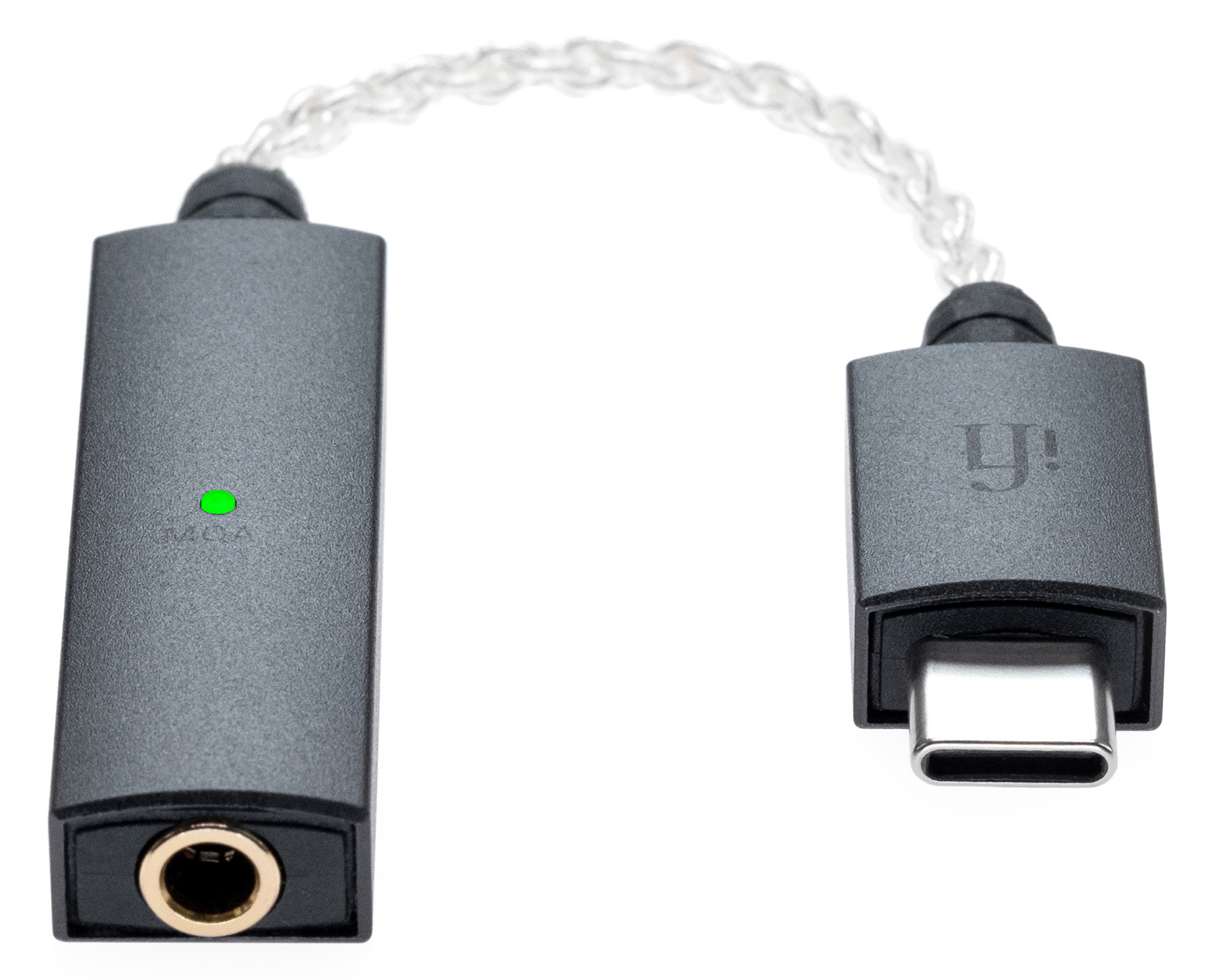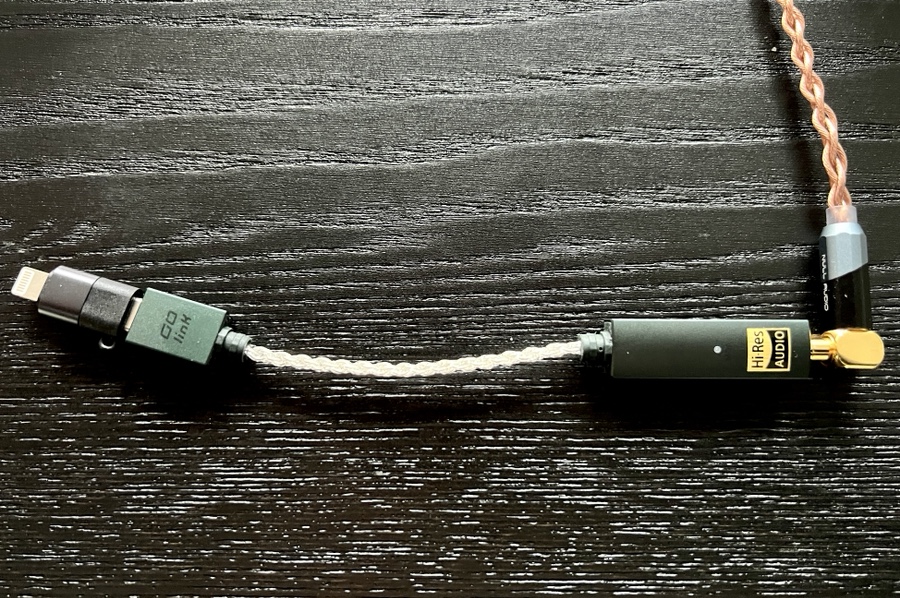02023-01-02 | Music, Sound, Technology
Early December, while I was in Lisbon, I noticed write-ups about a new digital-analog-converter from Astell & Kern, called the HC3 – link. It uses the ES9219MQ chip from ESS, is very small, and can be plugged into laptop with USB-C. The HC3 also comes with an adapter for the iPhone’s Lightning port. Price is around $200 and available sometime soon, in February I think. While looking into this DAC I came across this one, the Go-Link, made by an English company called ifi-Audio.

The chip in the Go-Link is the same one that powers the HC3. The Go-Link comes with a USB-C plug plus a Lightning adapter for the iPhone and an adapter for a USB-2 port, for computers that don’t have USB-C. I found the Go-Link at BH-Photo (link). The price is $59. The A&K looks cooler, perhaps, but is it nearly four times cooler? Plus, the Go-Link is available now. I pre-ordered in December and it arrived this morning.
I immediately plugged the Go-Link into my phone and used my Euclids to listen to a variety of lossless files (16/44.1 downloaded files on Apple Music, 24/96 files on Dropbox) and, while direct comparison is not possible, my impression was that the music felt more alive, more present, more dimensional. I really think this is the tool we were waiting for to be able to listen to high quality audio while on the move, without breaking the bank. Only a year ago, listening to this level of quality meant having a DAP (digital audio player), which costs at least $500 and can go up to $3,000 and more. And it’s one more thing to carry around. Now that Apple Music has caught up to Tidal and one can download hi-res files and play them back on the phone, or if one uses Dropbox in conjunction with a player-app like CloudBeats, the last barrier was how to get digital sound from the phone to your headphones. Bluetooth is practical, and I use it myself, but doesn’t sound very good. There were DACs, of course, but they weren’t tiny and they weren’t cheap. This Go-Link is the missing link, perhaps. I am psyched.

02022-12-03 | Binaural, Music, Recording, Studio, Video
This morning I noticed a new comment from Éric B. on a post from 2008:
Ok. After almost 14 years…. Is there a place to still access this video? It’s simply gone now. I found someone reposting your video but it’s been transcoded so the sound is not…. Really crisp anymore.
Help Ottmar! Help! ;)
Have a good time on your side of the planet and to all the crew. Much love.
Éric
Ah, the Internet Entropy. Well, I hadn’t watched that video in a long time, myself, and went looking for it. The video is 14 years old and looks like, well, the way video used to look. But it’s still great fun to see/hear when Davo walks around with the shakers or when I get up (at around 3’52”) and walk around the head. Watch the video here or go to this link, where you will also find download options.
Reminder: you will NOT properly hear the music is you listen with AirPods or similar “open” earphones. If that’s all you got, try to cover them with your hands. It’s important that your left ear does not hear anything emanating from the right speaker and vice versa. That is also why regular loudspeakers will not work at all. Old fashioned “closed” headphones, that cover all of the ear, work well. IEMs work, of course.
This links to the original post from September of 2007, which explains the video a little.
This links to a post by Stephen Duros about the binaural recording experience.
02022-07-31 | Sound, Video
Walking down Marcy Street I recognized the sound right away. For years I walked past this water drain and enjoyed the sound. I stopped and recorded a little bit of it. Steady 106 BPM.
02022-07-16 | Music, Sound
Be Sure to Listen to This at Japanese Teatime by Sugai Ken, on Bandcamp.
Interesting music based on field recordings.
Check out the pricing!!! $12 for the CD, which includes the digital album… or $722 if you want to buy only the digital files. He writes:
The concept of this work and digital sales do not go well together. Please buy it on CD. This is the sincere wish of the label.
I checked – this album is not on Apple Music either.
I applaud him for going his own way.
02022-07-08 | Brain, Music, Sound
A fascinating new study has shed light on the phenomenon of using sound for pain relief. Using state-of-the-art brain-imaging techniques an international team of researchers has uncovered the neural mechanism by which sound reduces pain sensitivity, and surprisingly, low volumes were more effective than turning the music up loud.
Sound can blunt pain in an unexpected way
play it low and play it slow…
02022-04-28 | Binaural, Music
Have any of you used it? Did you use the speaker array or headphones for either mixing or listening? The speaker array for Dolby Atmos mixing sounds insane. This is the setup at a studio called Blackbird – don’t know the studio, found it on the web. It is called a 9.1.6 setup = three speakers in front + three on either side x subwoofer x six speakers overhead. Beside a cost of $30k+ I imagine there would be serious upkeep as well as those speakers would have to be calibrated regularly.
I don’t like having to sit still in one spot in order to properly hear something. I am much more interested in doing something with, and for, headphones. Apparently that is something that became possible last year. I have listened to some Atmos mixes and was left a little underwhelmed. Would like to hear about your reaction to it.
Gave another listen to some Atmos mixes, using wired headphones plugged into my lappie, and some are really pretty impressive…
Steve left this link in the comments. Insight from an audio engineering perspective. Yikes. I imagine a lot will happen in the next few years. At this point most people probably prefer listening with headphones… plus the streaming companies will want to differentiate themselves and offer higher quality content.
This morning I listened to a few Dolby Atmos examples that I downloaded to my phone. I used the AirPods Max to see whether Bluetooth would be able to deliver the sound from the larger files… and it clearly could not. I heard more drop-outs during that walk today than I had heard during the entire time I’ve had the headphones. The bottleneck is clearly Bluetooth itself.




